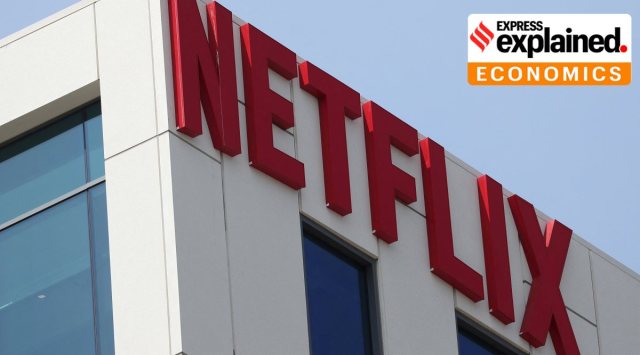Netflix has said that geopolitical tensions — led by the war in Ukraine that triggered a suspension of services in Russia — rising inflation, fierce competition, and some Covid-related disruptions have contributed to the loss of some 2,00,000 subscribers in the first quarter of this calendar year.
This has happened for the first time in more than a decade, the company said, and predicted further losses going ahead.

The current situation is the opposite of an earlier forecast by the streaming services major that it would add 2.5 million subscribers during the period.
The company’s stock tumbled a massive 26 per cent on Tuesday, erasing more than $40 billion from its stock market value.
It also likely impacted other entertainment-related stocks — Roku dropped over 6 per cent, Walt Disney fell by 5 per cent, and Warner Bros Discovery was down by 3.5 per cent.
Why has Netflix lost subscribers?
The company lost 2,00,000 subscribers in Q1 2022 as it fell way short of its earlier forecast of adding 2.5 million subscribers. The suspension of services in Russia has resulted in a loss of 7,00,000 subscribers.
Gloomier times lie ahead — the company has predicted a loss of 2 million subscribers in the coming quarter.
Story continues below this ad
“Macro factors, including sluggish economic growth, increasing inflation, geopolitical events such as Russia’s invasion of Ukraine, and some continued disruption from COVID are likely having an impact as well,” Netflix said in a letter to shareholders.
Sharing of accounts across households and the company’s growth during the first two years of the pandemic which “created a lot of noise” were among the reasons the company attributed its loss of subscribers to.
“…In addition to our 222m (million) paying households, we estimate that Netflix is being shared with over 100m additional households, including over 30m in the UCAN (US plus Canada) region,” the company said.
Netflix also said that increasing competition from other streaming services and even traditional television was a likely reason behind its sluggish growth in the quarter.
Story continues below this ad
“Competition for viewing with linear TV as well as YouTube, Amazon, and Hulu has been robust for the last 15 years. However, over the last three years, as traditional entertainment companies realised streaming is the future, many new streaming services have also launched,” the company said.
Finally, the company said, its growth over the last two years amid the pandemic “clouded the picture by significantly increasing our growth in 2020, leading us to believe that most of our slowing growth in 2021 was due to the COVID pull forward.”
So what’s next for Netflix?
Netflix has so far been committed to the subscription, ad-free model for its streaming service.
However, its CEO Reed Hastings hinted that the company could experiment with an ad-supported, lower-priced version of its service going forward, a model that has been used by some of its key rivals like HBO Max and Disney+.
Story continues below this ad
“Those who have followed Netflix know that I’ve been against the complexity of advertising, and a big fan of the simplicity of subscription,” said Hastings.
“But, as much as I’m a fan of that, I’m a bigger fan of consumer choice.”
The company also said it was looking for ways to monetise the millions of households sharing Netflix accounts.
While sharing accounts may have helped the company’s growth in terms of getting more people to watch content on Netflix, the company said it also “created confusion about when and how Netflix can be shared with other households”.
Story continues below this ad
To get around the issue, the company started testing different approaches to monetise such households, and in March introduced two new paid sharing features, where current members have the choice to pay for additional households, in three markets in Latin America.
Netflix said it was seeing good progress in terms of growth in the Asia Pacific region in a variety of markets including India.
Last December, Netflix had cut subscription prices for all its plans in India, with its cheapest mobile only plan now starting from Rs 149 per month instead of the earlier Rs 199 per month, which could be a likely reason for its sustained growth in the country.
Newsletter | Click to get the day’s best explainers in your inbox








































